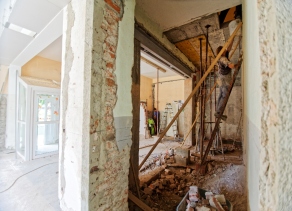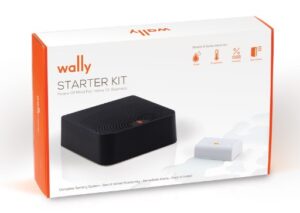 Now that the spring season is upon us, fix and flip investors are hard at work getting their properties ready. When getting your property market ready, many sellers will focus all their energy on the inside of the home despite the crucial role curb appeal plays in attracting potential homebuyers. First impressions matter whether online or in person, and curb appeal is one of the most important aspects that can determine how fast your flip sells.
Now that the spring season is upon us, fix and flip investors are hard at work getting their properties ready. When getting your property market ready, many sellers will focus all their energy on the inside of the home despite the crucial role curb appeal plays in attracting potential homebuyers. First impressions matter whether online or in person, and curb appeal is one of the most important aspects that can determine how fast your flip sells.
When improving the curb appeal of your property it’s helpful to think like a buyer. Take a walk around the property and take notes on what may turn off a potential buyer and then address those items. By improving your curb appeal not only are you attracting more people to your property, but you are also improving the overall value of the home.
Here are 3 simple tips to improve your properties curb appeal:
- Clean & Repair
Give your property a nice bath. Wash the windows, garage doors, and power wash the deck, driveway, and siding. If you don’t own a pressure washer, many home improvement store will let you rent one for the day. After you’ve given the home a nice scrub, you’ll be able to see if any trim, siding, gutters, or doors need repainting or replacing.
- Landscaping
This can be as simple as walking around the yard picking up sticks and dead foliage, trimming trees, weeding gardens and mowing the lawn. It may also be beneficial to plant a few inexpensive shrubs and flowers to fill in empty spaces and to add color to the yard. Be mindful of the budget, as you don’t want to overspend on landscaping, however, little touches will go a long way in attracting potential buyers.
- Finishing Touches
Check the light fixtures around the property to see if they need to be replaced or updated. Even though most home visits will happen during the day, having attractive light fixtures won’t go unnoticed by the homebuyers. Also, don’t forget about the mailbox. It’s going to be one of the first items people will notice about the property since it has the street number on it. If the mailbox is still in good shape replacing the house numbers so they are clean and visible can be a simple and easy fix. If the mailbox is dented, broken and falling off its post, it may be best to replace it. This won’t be a costly fix though, mailboxes are sold for as little as $20 at a local Home Depot.
Homes with high curb appeal usually list at a higher price point and take less time to sell. A quick flip and a return on the investment means you can go out and find another project to work on
Submit a free inquiry and the opportunity will be matched with our qualified and approved hard money lenders. The simple application portal digitalizes the lending process enabling brokers and borrowers to upload needed documents, authorize credit checks and have a full loan package for our lenders to review. Apply now!
Do you have some other tips to increase your curb appeal and sell your flips fast?
Leave a comment below and let us know what you think!


 In real estate investing, particularly fix and flip investing, choosing the right property to invest in can determine if the project will be profitable. So, before selecting a property to flip it’s important to know what the value of the home will be after renovations, or the After-Repair Value (ARV).
In real estate investing, particularly fix and flip investing, choosing the right property to invest in can determine if the project will be profitable. So, before selecting a property to flip it’s important to know what the value of the home will be after renovations, or the After-Repair Value (ARV). Before starting in real estate investing let’s go over some commonly asked hard money lending questions.
Before starting in real estate investing let’s go over some commonly asked hard money lending questions.  Bridge Loan Network is the industry solution for streamlining the process of originating hard money loans. With more features than before, your company can do more on Bridge Loan Network’s Loan Origination System (LOS). Our team has taken some of the most tedious tasks and offered them to you with the click of a button.
Bridge Loan Network is the industry solution for streamlining the process of originating hard money loans. With more features than before, your company can do more on Bridge Loan Network’s Loan Origination System (LOS). Our team has taken some of the most tedious tasks and offered them to you with the click of a button. Simply stated, how your lending process is structured holds a significant role in how efficient, compliant and quick your organization is in processing a loan from application to closing.
Simply stated, how your lending process is structured holds a significant role in how efficient, compliant and quick your organization is in processing a loan from application to closing. Many real estate investors are seeing an increasing demand to add technological or “smart” upgrades to their projects. This is attributed to both an increase in desire from prospective tenants or homeowners and to the additional value, these smart upgrades add to the properties.
Many real estate investors are seeing an increasing demand to add technological or “smart” upgrades to their projects. This is attributed to both an increase in desire from prospective tenants or homeowners and to the additional value, these smart upgrades add to the properties.












